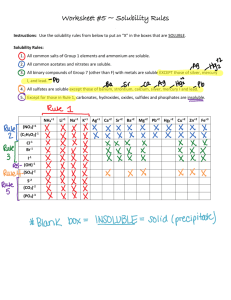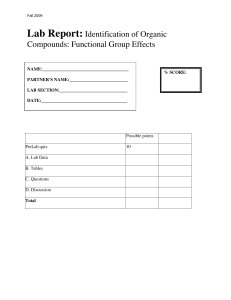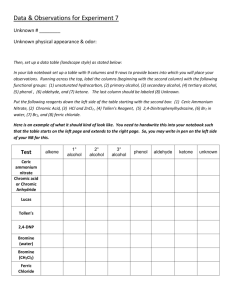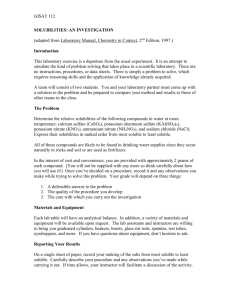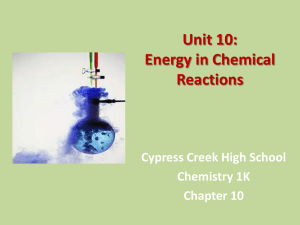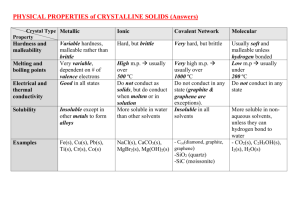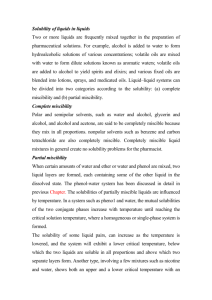Lab Report: Qualitative Organic Analysis
advertisement
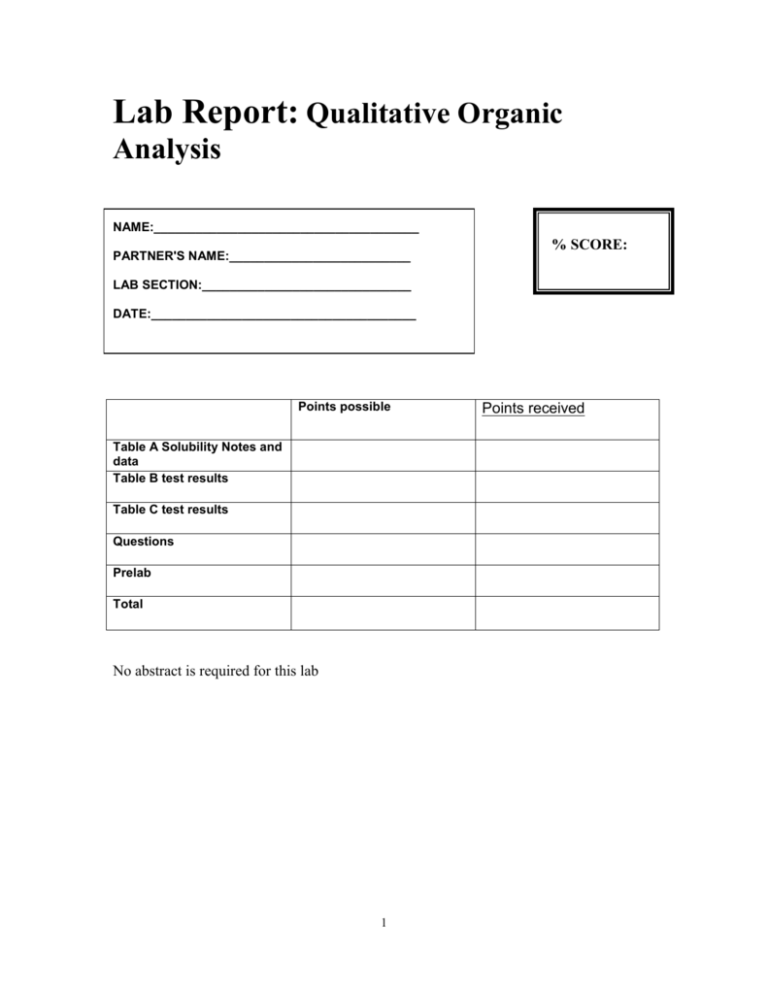
Lab Report: Qualitative Organic Analysis NAME:______________________________________ PARTNER'S NAME:__________________________ % SCORE: LAB SECTION:______________________________ DATE:______________________________________ Points possible Table A Solubility Notes and data Table B test results Table C test results Questions Prelab Total No abstract is required for this lab 1 Points received Table A. SOLUBILITY NOTES and DATA: Unknown # Example Soluble in H2O? If yes, pH Test Results? Yes pH paper turned red, so acidic No Example Soluble in 5% NaOH? Soluble in 5% NaHCO3? Soluble in HCl? Solubility Group Group 1, carboxylic acid, small molecule (less than or equal to 4 C’s) No, two layers, not soluble No, two layers, not soluble Group 7, alcohol, aldehyde, ketone or alkene, large molecule (greater than or equal to 5 C’s) 1 2 3 4 5 6 7 Note- an “X” through the box means that a given test was not needed based on the flowchart, i.e. it did not have to be performed. 2 Table B. Solubility groups and Chemical test results Unknown # Example Physical State (solid or liquid) Solubility Group Liquid Group 2 2,4-DNP Test Results Negative 1 2 3 4 5 6 7 3 Tollen’s Test Results Chromic Acid Test Results Positive Br2 Test Results Table C. Unknown Structures Unknown # Classification Name of Unknown Example 2o Alcohol 2-Pentanol Structure of Unknown OH 1 2 3 4 5 6 7 4 QUESTIONS 1. Write specific equations for the following classification tests. For these problems you must use a structure of one of your determined unknowns that reacted with the indicated reagent. (a) 2,4-DNP Reagent (An Aldehyde or Ketone) (b) Tollen’s Reagent (An Aldehyde) (c) Chromic Acid (1o or 2o alcohols) If you did not have a positive test here choose an alcohol from the table of possible unknowns which would react. (d) Bromine Test (Alkenes) – Show stereochemistry of product. 2. Write the products of the reaction that would occur when one of your unknowns reacts with the following acids and bases. Refer to the solubility classification flowchart and what you know about the reactions of acids and bases for help. Draw arrows indicating bond breakage and formation. (a) A carboxylic acid unknown and NaHCO3 (Sodium Bicarbonate) (b) A phenol unknown and NaOH (Sodium Hydroxide) (c) An amine unknown and HCl (Hydrochloric Acid) 5 3. Briefly explain why Chromic Acid tests positive for 1 and 2 but not 3 alcohols. 4. How is foaming produced in the positive test with sodium bicarbonate? Explain your answer using chemical reactions. 5. Why are alcohols and ketones with few carbons water soluble while those with 6 or more carbons less soluble in water? 6. Using the pKa and pKb values in you textbook and your knowledge of general chemistry. Write a chemical equation and calculate the equilibrium constant for the potential acid/base reaction at room temperature between benzoic acid and aniline. 7. Write a chemical reaction and calculate the equilibrium constant for the acid/base reaction of phenol and aniline. 8. Would the reaction in question 6 or 7 proceed more toward completion? Explain 6

